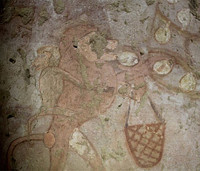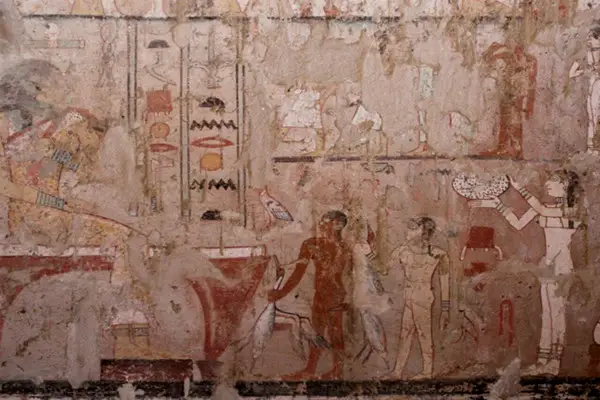|
4,440-year-old Egyptian Tomb Built for Powerful Priestess
February 4, 2018
A tomb discovered near Cairo dates to 4,440 years ago and is thought to belong to a high-ranking priestess, Egyptian officials said. The tomb, found in Giza's western necropolis, belonged to Hetpet, a priestess of the goddess Hathor and known associate of Egyptians of the highest authority, said Antiquities Minister Khaled al-Enany. Notable as well was the relatively good condition of the contents of the tomb, including wall paintings not always seen in such tombs: grazing animals, people gathering fruit, and monkeys eating fruit and dancing in front of musical accompaniment. Monkeys were often kept as pets at this time. The wall paintings also show Hetpet herself hunting and fishing. Hetpet's name and titles are engraves inside the tomb. Female priests were not common in Egypt, although the cult of Hathor had more than its share. Archaeologists in the early 20th Century found fragments of artifacts belonging to Hetpet; those artifacts were taken to a museum in Berlin. Hetpet's mummy has not been found. The mud brick tomb dates to 2400 B.C., in the Old Kingdom and during the 5th Dynasty, about 200 years after the Great Pyramid and the Great Sphinx were built. During this dynasty, pyramids were built at Saqqar and Abusir and the earliest known copies of the Pyramid Texts funerary prayers appeared. |
Social Studies for Kids |
Social Studies for Kids
copyright 2002–2019
David White






